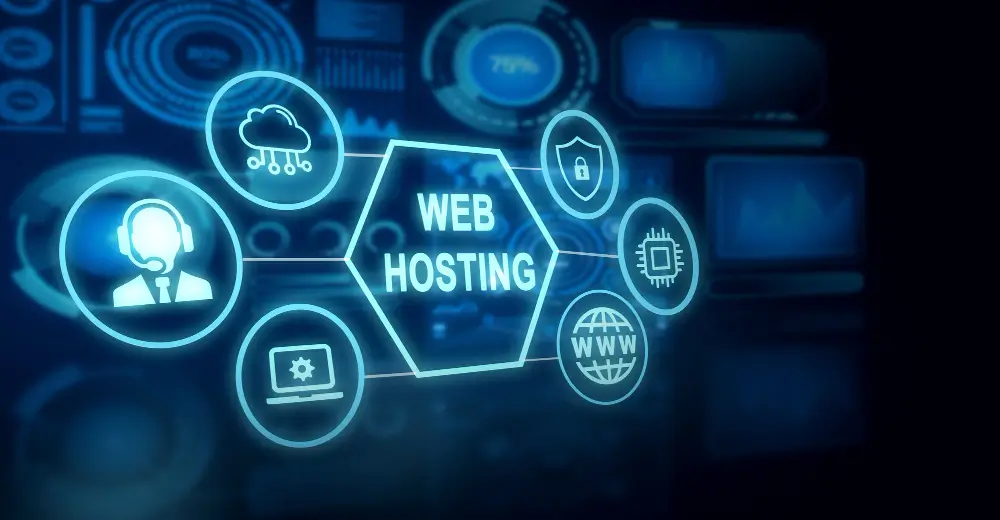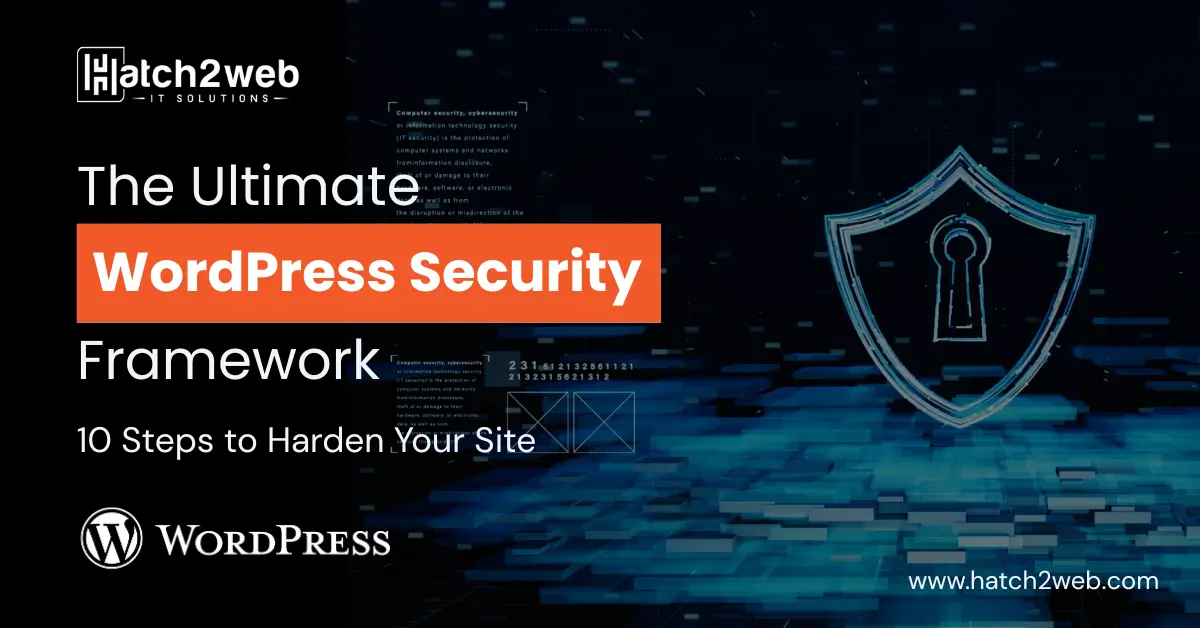Your website is more than a digital presence—it’s your credibility, your storefront, your reputation. A security breach can cost you traffic, trust, and even search engine rankings. At Hatch2Web, we believe that security isn’t an afterthought; it’s a core pillar you build from day one.
In this article, we’ll walk through a robust, field-tested WordPress security framework. No fluff, no jargon—just clear steps you can implement today to make your site more resilient.
Why WordPress Security Matters
- Reputation & trust – Visitors expect your site to be safe. If they see “Site may be hacked” warnings, bounce rates will rise.
- Revenue & conversions – Downtime during a hack means potential sales lost (or leads gone).
- SEO & indexing – Search engines may delist hacked sites or penalize them for malicious content injection.
- Data protection – Customer and user data must be guarded. A breach can have legal or regulatory consequences.
In short, prevention is far less painful (and costly) than cleanup.
10 Steps to Harden Your WordPress Security Framework
Below is a strategic checklist. It’s not just about tools—it’s about habits, policies, and layered protection.
1. Select a security-conscious hosting environment

Your host is your first line of defense. before anything else:
- Ensure they offer daily or real-time backups (ideally off-site).
- Check that they provide SSL certificates (Let’s Encrypt or better) by default.
- Verify they maintain server-level firewalls and intrusion detection systems.
- Look for hosts that run regular security audits and offer 24/7 support.
- Read user reviews around uptime history and how they handled past security incidents.
A cheap “shared host” may save money—but it often lacks critical protections.
2. Maintain up-to-date cores, themes, and plugins

Outdated software is one of the most common gateways for attackers. Always:
- Apply updates to WordPress itself, your active theme, and all plugins.
- Use only trusted, well-maintained plugins (check reviews, number of active installs, author reputation).
- Avoid “nulled,” pirated, or unverified plugins/themes—they often include backdoors.
Many vulnerabilities are discovered and patched—so staying current matters.
3. Use strong credentials & limit user access
Passwords and user roles are critical:
- Use complex passwords (20+ characters, mix of uppercase, lowercase, numbers, symbols).
- Avoid generic usernames like “admin.”
- Enforce least privilege: only give users the access they need (Don’t make every user an administrator).
- If a third party (developer, agency) needs access, grant temporary permissions and remove them when done.
4. Enable off-site, encrypted backups

Backups give you a clean “undo” button:
- Store backups off your server—e.g., in cloud storage or a separate managed backup system.
- Use encryption so backup files aren’t trivially exposed.
- Schedule backups (daily or more often for dynamic sites).
- Ensure you can restore quickly.
Even if your site is compromised, a clean backup means you can bounce back fast.
5. Protect against brute force attacks

Bad actors often try thousands of username/password combinations. To defend:
- Limit login attempts (e.g., block IPs after X failed tries).
- Use CAPTCHA or “honeypot” login traps.
- Change the default login URL (/wp-login.php) to something less obvious.
- Monitor login attempts and automatically block suspicious IP addresses.
6. Use malware scanning & file integrity checks
You want to catch issues early:
- Regularly scan your site files for malware or suspicious code.
- Enable file integrity monitoring (compare core, theme, plugin files vs known good versions).
- Get alerts when changes occur in critical files.
- Use a security plugin that can automatically quarantine or flag suspicious code.
7. Activate uptime/downtime monitoring
If your site goes offline, even for a few minutes, the impact can ripple:
- Use a service or plugin that pings your site regularly.
- Receive instant notifications if the site becomes unresponsive.
- Combine this with logs or activity tracking so you can quickly diagnose the root cause.
8. Remove unused themes, plugins, and components
Every inactive plugin or theme on your site is a potential vulnerability:
- Delete all plugins/themes you don’t actively use (don’t just deactivate them).
- Keep a default WordPress theme (like Twenty Twenty-Three) for fallback.
- Fewer components = fewer attack vectors + improved performance.
9. Enforce two-factor authentication (2FA) for admins
Even if passwords leak, 2FA adds a second barrier:
- Require administrators (and ideally all users) to use 2FA.
- Use standard authentication apps (e.g. Authy, Google Authenticator) rather than SMS when possible (SMS is more vulnerable).
- Consider enforcing backup codes or physical tokens for critical users.
10. Deploy a robust WordPress firewall & monitor activity logs
A firewall filters out malicious traffic before it reaches your application:
- Use a Web Application Firewall (WAF) tailored for WordPress.
- Configure rules for known bad patterns (SQL injection, XSS, etc.).
- Use an activity log plugin to track key events:
- Login attempts (successful and failed)
- Plugin/theme updates
- User creation, deletion, or role changes
- File changes or uploads
- Audit your logs regularly to detect anomalies early.
What Happens If Your Site Isn’t Secure?
If you skip or neglect security:
- Hackers may insert malicious redirects, deface pages, or inject spam.
- Search engines can penalize or blacklist your site.
- You lose visitor trust (and possibly legal or regulatory compliance).
- Cleanup and restoration can cost time, money, and reputation.
Think of security as insurance—essential, and often much less painful than the alternative.
What to Do After a WordPress website Breach
Even the best defenses might be breached. If it happens:
- Isolate immediately – Take the site offline or put it in maintenance mode.
- Identify the breach point – Use logs, scans, and history to see when and how the attacker entered.
- Restore from a clean backup – Preferably one from before the breach.
- Reset all passwords & revoke access – Especially for admin, hosting, database, FTP, etc.
- Patch and update everything – Plugins, themes, core.
- Run a deep malware scan and remove malicious code.
- Harden security further (enable 2FA, tighten permissions, etc.).
- Notify stakeholders (users, customers) if their data may have been exposed.
- Request a search engine review (if your site was blacklisted).
- Learn and document – Use the breach as a learning opportunity to strengthen protocols.
Common Mistakes and Misconceptions
| Mistake | Why It’s Risky | Better Approach |
| Using “admin” or easy usernames | Attackers know default names | Use randomized or non-obvious usernames |
| Delaying updates | Vulnerabilities remain open | Apply updates promptly |
| Keeping unused plugins/themes | Expands attack surface | Delete what you don’t need |
| Relying only on backups on same server | All data lost if server compromised | Use off-server backups |
| Not enabling 2FA | One password compromise gives full access | Enforce 2FA, especially for admins |
| No firewall or security plugin | No protection at app layer | Use WAF + security plugin with firewall rules |
| Ignoring logs | You miss early red flags | Monitor logs and alerts proactively |
Final Thoughts: Security as a Mindset, Not a Checklist
Security isn’t a one-and-done task — it’s an ongoing mindset. The steps above should become part of your routine: weekly plugin checks, monthly full scans, quarterly audits, etc.
At Hatch2Web, our goal is not just to build beautiful, functional sites—but resilient ones. If you ever need help implementing these practices, auditing your current site, or recovering from an incident, we’re here to help.




